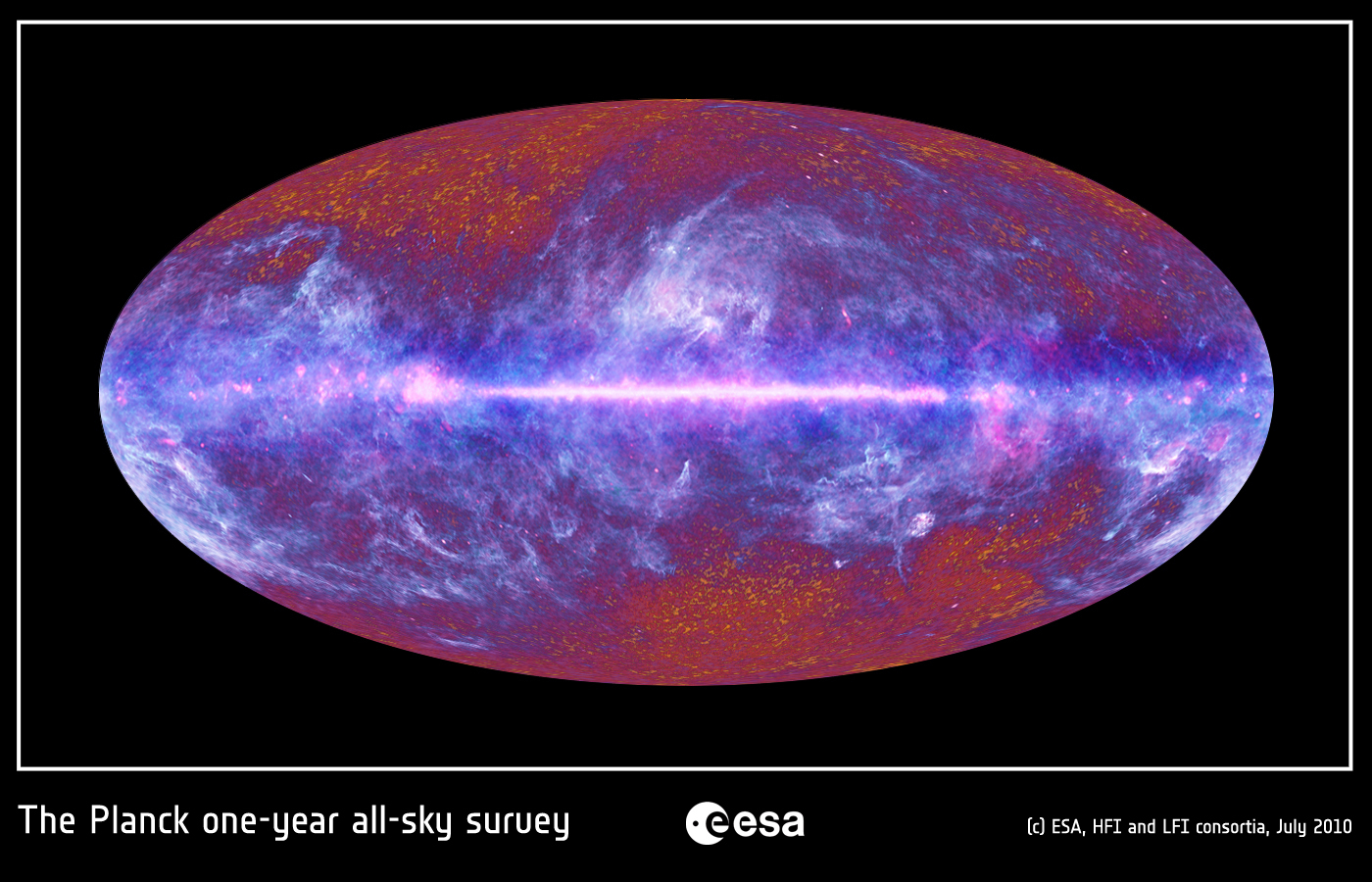
Image courtesy of ESA.
The center line that runs through the image is the galactic plane, sprawling across our field of view the same way it does in the sky on a clear night. The wispy, silvery-blue projections extending out of the galactic plane detail the large-scale structure of the Milky Way. But it is the top and bottom of the image, above and below these majestic plumes of gas, that show the real prize: the cosmic microwave background.
Immediately after the big bang, our fledgling universe was nothing but a hot, dense soup of charged particles. At an age of about 300,000 years, the universe had cooled enough for atoms to form, allowing light to travel freely for the very first time. Today, astronomers detect this primordial light as a nearly homogeneous 2.7K radiation that fills the entire sky. (2.7K is incredibly cold, by the way. At less than three degrees above absolute zero, detecting it in the first place is one of the modern miracles of science.) Small temperature fluctuations in the CMB are visible in this image as tiny yellow and green spots. Slightly overdense regions are hotter than the surrounding 2.7K radiation, while slightly underdense regions are cooler. It is these anisotropies that gave rise to all the structure we see in the universe today. Stars, galaxies, galaxy clusters... all of these objects were born of slightly overdense areas of radiation in the very early universe.
You may have seen similar images before. Two previous missions, COBE in 1996 and WMAP in 2003, have already measured the CMB; however, Planck will map this radiation with unprecedented accuracy. Astronomers are hoping that the current mission will allow them to glimpse evidence of inflation, the accelerated expansion the universe is believed to have undergone very early in its development. The stunning image above is only the first of many to come, and is probably the most crude. Researchers will have to eliminate the "noise" caused by the Milky Way if they are to properly map the CMB across the entire sky. Luckily, Planck's refined observations between now and 2012 should allow them to do just that.
For more on the CMB, check out this paper written by an incredibly beautiful, witty and smart young cosmologist.
oooh... pretty picture. my new desktop background.
ReplyDeletelove the colors....will be interested to follow the Planck to see our universe sans Milky Way, even though the MW colors are extraordinary...just curious what it's blocking.....
ReplyDelete